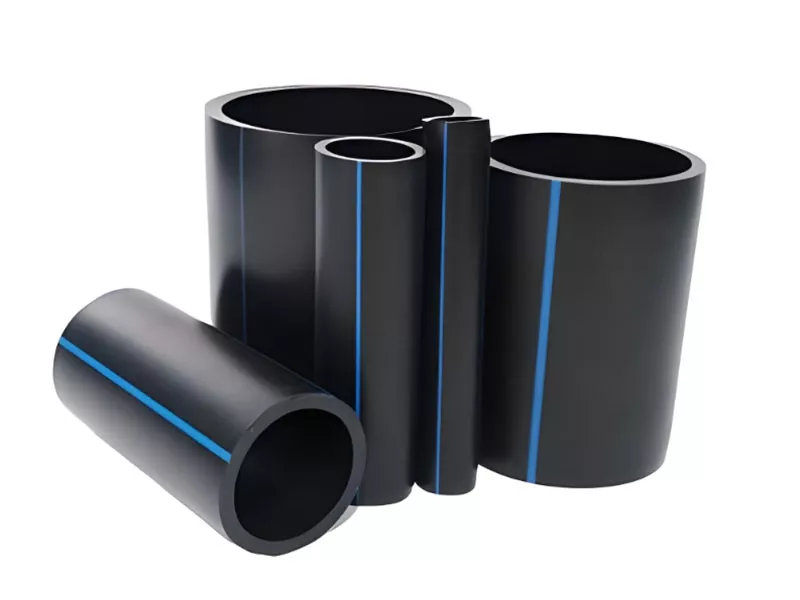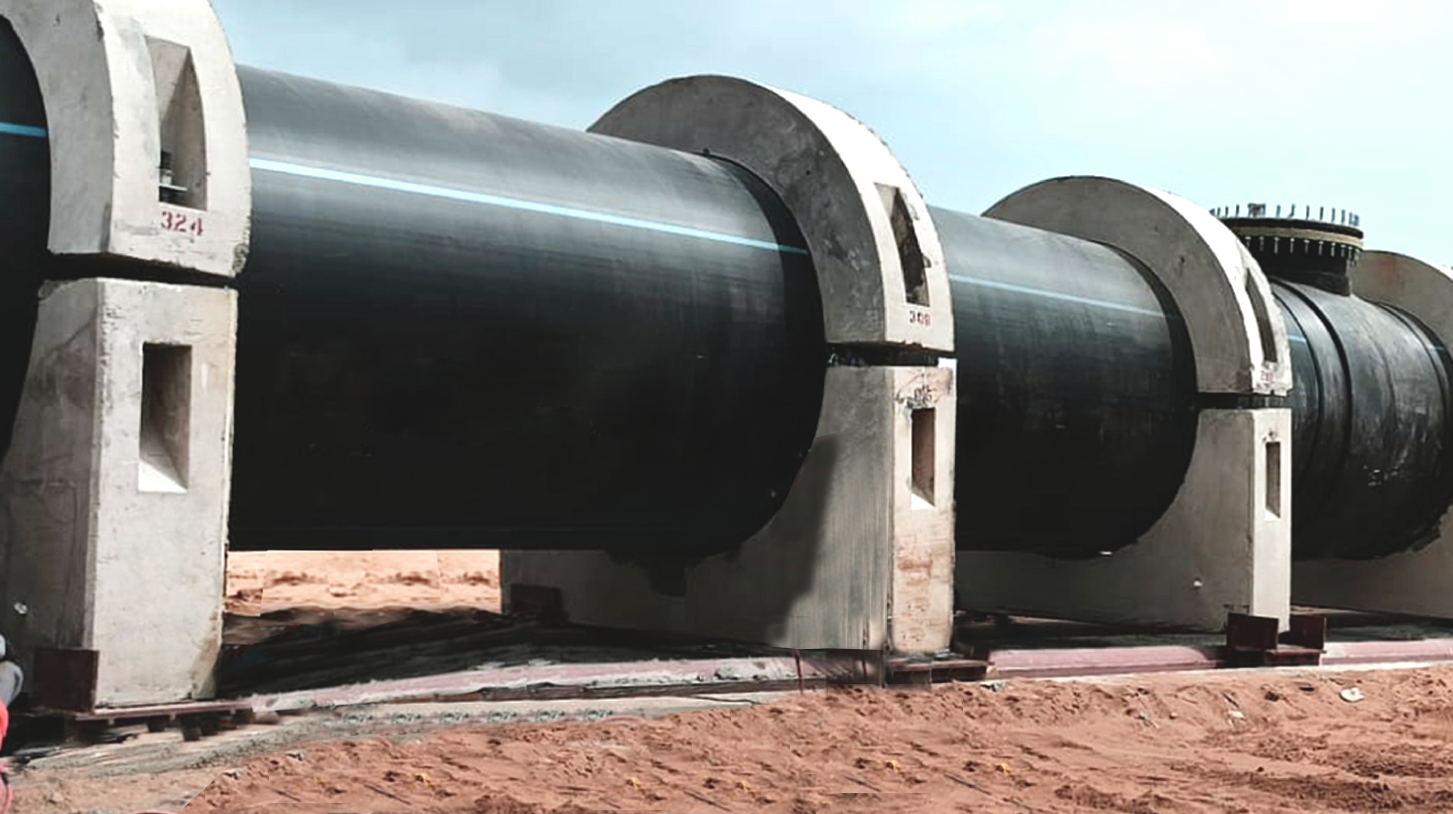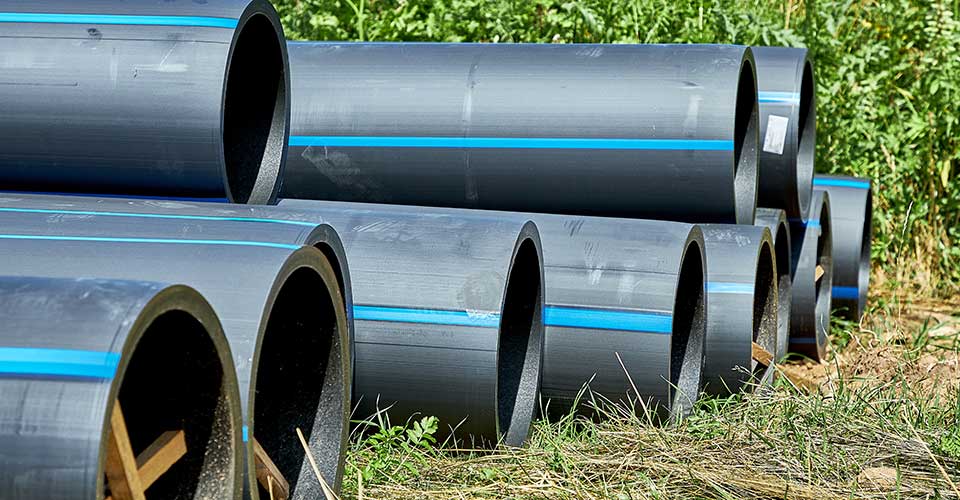Benefits of Choosing custom hdpe pipe manufacturing Midland TX for Unique Requirements
Explore the Manufacturing Refine Behind High-Quality HDPE Pipeline and Its Applications
The production procedure of top quality HDPE pipes is elaborate and systematic. It begins with the choice of raw materials that improve performance. Following this, ethylene undertakes polymerization to form resin, which is after that shaped through extrusion. Quality control is extremely important, guaranteeing that the final product fulfills rigorous standards. Nonetheless, the trip of HDPE pipelines doesn't end with production. Their applications throughout numerous markets reveal a more comprehensive relevance worth taking a look at.
Understanding HDPE: Features and Advantages

High-density polyethylene (HDPE) is a functional polycarbonate recognized for its durability and resistance to different ecological elements. This product exhibits superb tensile stamina, making it appropriate for demanding applications. Its low-density framework adds to a lightweight item, promoting ease of handling and setup. HDPE likewise showcases amazing resistance to chemicals, which reduces deterioration when revealed to rough compounds.
The product's reduced dampness absorption even more improves its durability, making it excellent for use in pipelines and tank. Furthermore, HDPE is resistant to ultraviolet (UV) radiation, making certain that products maintain their integrity even when exposed to sunlight. Furthermore, its flexibility permits the creation of complex forms without compromising strength. The environmentally friendly nature of HDPE, commonly stemmed from recycled products, includes in its allure, advertising lasting methods in production. In general, these homes and advantages make HDPE a recommended option for various industrial and customer applications.
Raw Product Option for HDPE Manufacturing
The choice of resources for HDPE manufacturing is important to validate the end product meets the preferred specifications and quality standards. High-density polyethylene (HDPE) is mostly created from polymerized ethylene, obtained from nonrenewable fuel sources such as gas or petroleum. The high quality of these feedstocks greatly influences the mechanical and thermal residential properties of the last HDPE.
Ingredients also play a substantial duty in boosting HDPE's efficiency, including antioxidants, UV stabilizers, and colorants, which improve sturdiness and resistance to ecological factors. The option procedure should take into consideration not just the chemical composition of the raw products yet also their handling attributes to ensure reliable manufacturing.
The sourcing of raw materials should prioritize sustainability and compliance with environmental laws, as liable techniques are vital in today's market. Eventually, mindful raw product option lays the foundation for creating top quality HDPE pipes ideal for varied applications.
The Extrusion Process: Shaping HDPE Pipe
The extrusion process plays an essential role fit HDPE pipes, beginning with meticulous material preparation methods that assure excellent flow and consistency. Just as important is the layout of the die, which straight affects the last measurements and surface top quality of the pipeline. Together, these elements contribute significantly to the performance and top quality of HDPE pipeline production.
Material Preparation Strategies
Reliable production of HDPE pipes starts with precise material preparation techniques, specifically the extrusion procedure. During this phase, high-density polyethylene resin is initial dried to remove dampness, making certain excellent flow qualities. The resin is then fed into the extruder, where it goes through heating and melting, transforming into a thick state. This home heating process is very carefully managed to keep the product's honesty and efficiency. The liquified HDPE is compelled with a die, shaping it right into a continual pipeline type. Proper temperature level management during extrusion is necessary, as it straight impacts the material's residential properties and the end product quality. When shaped, the HDPE pipe is cooled down and reduced to defined transair fittings lengths, all set for subsequent processing and applications.
Die Design Value
Accuracy in die layout plays an important function in the extrusion process of HDPE pipes. The die acts as the final shaping tool, directly affecting the pipe's measurements, wall density, and surface area coating. A well-designed die warranties uniform material circulation, reducing defects such as abnormalities and weak places. The geometry of the die have to be enhanced to suit the particular homes of HDPE, including its viscosity and thermal behavior during extrusion. Additionally, the cooling price of the material as it travels through the die can noticeably influence the pipe's architectural honesty. Investing in sophisticated die innovation is essential for makers intending to produce top quality HDPE pipelines that fulfill industry standards and customer expectations.
Quality Assurance Steps in HDPE Manufacturing
Numerous variables influence the top quality of HDPE pipe production, effective quality control actions are critical to guarantee consistency and integrity in the last item (American Plastics HDPE Pipe for Oilfield). Trick high quality control practices include rigorous product inspection, confirming that the raw polyethylene fulfills well established criteria for pureness and density. Throughout the extrusion procedure, parameters such as temperature, stress, and cooling time are carefully kept track of to keep dimensional accuracy and architectural honesty
Furthermore, post-production testing is crucial; producers typically conduct hydrostatic tests to analyze the pipe's strength and resistance to stress. Aesthetic evaluations for surface area defects further boost quality control. Certification from appropriate criteria companies, like ASTM or ISO, offers an additional layer of reliability. By executing these extensive high quality control measures, makers can reduce defects, enhance performance, and make sure that the HDPE pipelines meet the certain requirements of numerous applications, eventually bring about customer satisfaction and rely on the product.
Applications of HDPE Pipeline Throughout Industries
HDPE pipes are made use of across various markets as a result of their longevity and adaptability. In water circulation systems, they ensure effective delivery, while in wastewater monitoring, they offer reliable services for waste transport. Additionally, farming irrigation networks gain from HDPE's resistance to rust and versatility, making it a suitable selection for modern-day farming techniques.

Water Distribution Equipments
A significant variety of industries depend on high-density polyethylene (HDPE) pipes for reliable water circulation systems. Known for their toughness and resistance to corrosion, HDPE pipelines are extensively utilized in municipal water system networks, water pipe repair near me agricultural irrigation, and industrial applications. Their lightweight nature promotes simple handling and setup, minimizing labor expenses and time. Additionally, HDPE pipelines can fit various stress degrees, making them suitable for both low and high-pressure systems. hdpe pipe fittings Midland TX. The adaptability of the material enables smooth combination into existing framework, lessening the demand for comprehensive excavation. In addition, HDPE's resistance to chemical seeping guarantees that the water provided continues to be safe and tidy, making it a perfect selection for maintaining the top quality of drinkable water throughout different fields
Wastewater Monitoring Solutions
Effective water circulation systems also lead the way for cutting-edge wastewater monitoring remedies, where high-density polyethylene (HDPE) pipes play a significant function. Renowned for their resilience and resistance to corrosion, HDPE pipes are suitable for transporting wastewater in various settings. Their adaptability permits easy setup in complicated environments, minimizing the need for comprehensive excavation. In addition, HDPE's smooth interior surface area minimizes friction, improving circulation rates and efficiency. These pipelines are also immune to chemical leaching, guaranteeing that contaminants do not jeopardize the surrounding environment. Industries, districts, and treatment centers increasingly rely upon HDPE pipelines for their integrity and long life, making them a favored option for contemporary wastewater management systems. This versatility highlights the important value of HDPE pipes across countless applications.
Agricultural Watering Networks
Agricultural irrigation networks profit substantially from making use of high-density polyethylene (HDPE) pipelines, which supply efficient and reputable water shipment to plants. HDPE pipes are lightweight, making them very easy to deliver and set up, while their versatility enables numerous setups in varied terrains. These pipelines demonstrate superb resistance to rust, chemicals, and UV radiation, making sure durability in severe agricultural environments. Additionally, their smooth indoor surface area reduces rubbing loss, maximizing water circulation and reducing energy expenses related to pumping. The long life of HDPE pipelines, frequently surpassing 50 years, contributes to reduce maintenance and substitute costs. Farmers significantly count on HDPE pipelines to improve irrigation efficiency and advertise lasting agricultural methods, eventually leading to improved plant yields and source conservation.

Future Trends in HDPE Pipe Modern Technology
As the need for lasting and reliable framework expands, advancements in HDPE pipe modern technology are poised to change numerous sectors. Arising patterns include the integration of smart technologies, such as sensors and IoT abilities, which promote real-time surveillance of pipe conditions, lowering maintenance expenses and protecting against leaks. Additionally, the growth of innovative manufacturing methods, such as 3D printing, is making it possible for the production of complex, customized pipe styles that cater to particular job requirements.
The focus on recycling and round economic situation methods is driving the advancement of HDPE pipes made from recycled products, enhancing sustainability. Improved jointing methods, such as electro-fusion and mechanical installations, are likewise enhancing setup performance and dependability. Lastly, the growing focus on environmental regulations is pressing producers to take on greener production processes, guaranteeing that HDPE pipelines not just meet market criteria but likewise foster an even more lasting future for facilities advancement.
Regularly Asked Concerns
Just How Does HDPE Compare to Various Other Plastic Products?
HDPE exceeds numerous other plastic materials relating to resilience, chemical resistance, and versatility. Its reduced thickness and high tensile toughness make it excellent for various applications, usually surpassing alternatives in both efficiency and durability.
What Are the Environmental Influences of HDPE Manufacturing?
The ecological influences of HDPE manufacturing include greenhouse gas discharges, energy usage, and potential air pollution from making processes. In addition, improper disposal can bring about dirt and water contamination, increasing problems her latest blog concerning lasting ecological impacts.
Can HDPE Water Lines Be Recycled?
Yes, HDPE pipelines can be recycled. Lots of facilities approve used HDPE for handling, changing it right into brand-new items. This reusing adds to sustainability initiatives, minimizing plastic waste while preserving resources and energy in the manufacturing cycle.
What Is the Life Expectancy of HDPE Pipeline?

How Do Temperature Variations Impact HDPE Pipe Performance?
Temperature level variants significantly affect HDPE pipeline efficiency, affecting versatility and strength. High temperatures can cause softening, while low temperatures may trigger brittleness, ultimately influencing the pipeline's longevity and suitability for various applications in varied atmospheres.